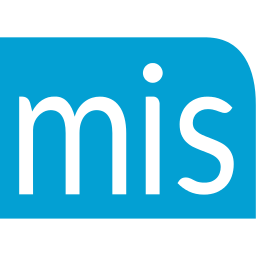Qualifying for budget, or handling objections around budget and money, are areas most sales reps feel uncomfortable in. To start with, I’ve heard many sales reps tell me that bringing up budget or money on a qualifying call is not only uncomfortable, but that it’s inappropriate as well. They say, “I haven’t given any value yet, so it’s too early to talk about budget!”
My response is that if your product or service is out of a prospect’s budget, or if they feel it’s too expensive, then it doesn’t matter how much value you give it – they aren’t going to buy from you. That’s why it’s crucial to qualify for budget up front – just as you would with decision maker, timeframe, etc.
And when objections about money or price come up, again, sales reps often struggle with how to handle it. In fact, most sales reps’ default response is to try to lower the price rather than either build value or help the prospect find other areas to get budget from.
Below you’ll find a variety of ways of both qualifying for budget and asking questions to help assist you in helping the prospect find the budget. Getting comfortable with regularly asking these questions – both during the qualifying stage and during the close – will allow you to both identify qualified prospects and help you close them.
As always, adapt them to fit your product, service or personality and practice, drill and rehearse them until they become automatic for you:
Budget Questions during qualifying:
“How much budget do you have set aside for new advertising?” (This week, quarter, or year)
“How much are you currently spending to attract new consumers?”
“How much budget do you currently spend on keeping or retaining your existing customers?”
“How much have you set aside this?” (Your product or service)
“What do you know about management’s budget when it comes to adding….” (Your product or service)
“Besides yourself, who else would weigh in on making a budget decision on this?”
LAYER:
“And what is their role (or your role) in that process?”
LAYER:
“And what do you know about their budget for adding a new…. (Your product or service)
“How much of a priority is this (your product or service area) for you this month?” (Or quarter)
“How much does your department (or company) spend on new client acquisition?”
“Our solution runs a ballpark of $10,000 up to $50,000.” If you liked what you saw, could you work within that range?”
“What’s your budget for this?”
“What are your plans for (your product or service area) for the upcoming season/quarter for this?”
Budget Questions during the close:
“What is a new customer worth, roughly, to you?”
LAYER:
“And how much budget, per week/month/year, have you set aside to attract those new customers?”
LAYER:
“And how much of that budget is still not used that you could apply to this?”
“When something like this comes up that you believe will work for you (your department or company), how do you normally go about getting the budget for it?”
“How do you draw from next month’s/quarter’s budget to get something like this that you really know will help you?”
“What is your yearly budget for this area (of your product or service)?”
LAYER:
“And how much of that do you have left over?”
“Let me ask you: around this time of year, how do you handle these kinds of purchases?”
“Who else could you get approval from to afford this extra expense?”
“How do you normally get something above budget approved?”
“How can you borrow against next year’s budget to get the profits and results this year?”
“What do you have to do now to make sure this is properly budgeted for next quarter?”
“What other areas/departments can you borrow from to start this service today?”
“If money weren’t an issue here, would you move forward?”
[If Yes]
“GREAT! What are three ways you can think of now to get the budget for this?”
“What did you do last time you really wanted something?”
“How did you get the money last time you really wanted something?”
“We all have ways of getting the money when we really want something, what way do you have of getting the money now?”
“Who (which department) could you borrow from?”
“How about I put you on our low cost down payment program, and you can then set up easy monthly payments so you can get started today?”
As you can see, there are a variety ways of not only bringing up or getting clarity around the budget issue, but of also leading your prospect to revealing how and when they can get or find the budget. Have some fun with this and hit MUTE while you get all the answers and solutions around budget that you need!
